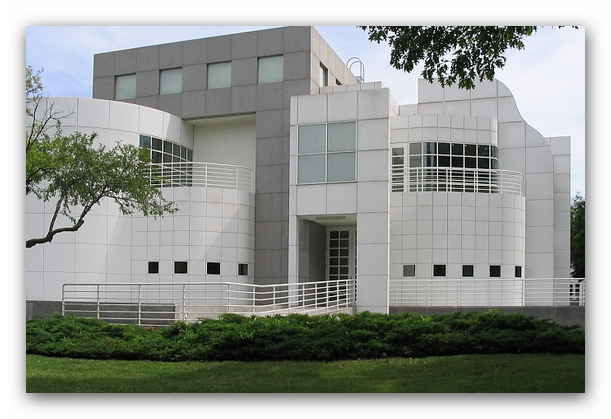Dec 1 2017 - Mar 25 2018
Des Moines, IA
Larry Fink and Garry Winogrand were both actively taking photographs in New York City in the 1970s. Winogrand primarily made photographs during the day of people on the city streets exemplified in the exhibition in a selection of work from his Women are Beautiful series that was made into a book. Larry Fink’s series Social Graces, also resulting in a book, consists of photographs depicting wealthy Manhattanites in the evenings at museum openings, balls, galas, and other such social events. In an effort to acknowledge the fact of social class in the United States, Fink juxtaposes the photographs of socialites with images of his working-class neighbors, the Sabatines, at their family gatherings and events in rural Pennsylvania. While their subject matter was different, their working style and resulting photographs are similar in that they employed what was called “the snapshot aesthetic.”
Fink, Winogrand, and others were following in the footsteps of their predecessors such as Walker Evans and Harry Callahan, both of whom practiced “straight photography.” Straight photography entails visualizing an image before making the picture, setting the time of the exposure and light correctly, and then taking the photograph. Nothing about the setting is altered nor is the photograph manipulated in the darkroom when making straight photography; the goal was to make sharp photographs that depicted the scene or subject “as the camera sees it.”
Fink and Winogrand were committed to making work “as the camera sees it,” but they were just as interested in Henri Cartier-Bresson’s work and writing about the “decisive moment.” The decisive moment, Cartier-Bresson explains, is "… a creative fraction of a second when you are taking a picture. Your eye must see a composition or an expression that life itself offers you, and you must know with intuition when to click the camera." Fink and Winogrand pushed the definition of straight photography with their spontaneous, brazen and furtive shooting styles—there was no time to consider the shot before making it. While they upheld the commitment not to make changes to their photographs in the darkroom like straight photographers, unlike them, they embraced their photographic “mistakes.” Fink’s and Winogrand's compositions are often askew; they made prints with blurs caused by a subject’s movement and they incorporated the lines of raking shadows caused by flash bulbs. These flaws are frequently found in amateur photography, hence the term “snapshot aesthetic.”
Credit: Exhibition overview from museum website
Exhibition Venues & Dates
Dec 1 2017 - Mar 25 2018
Des Moines, IA
